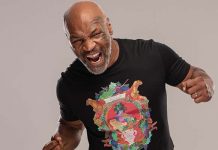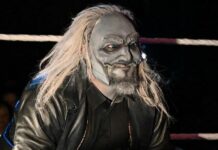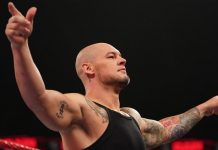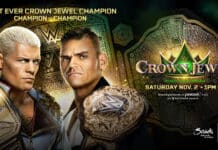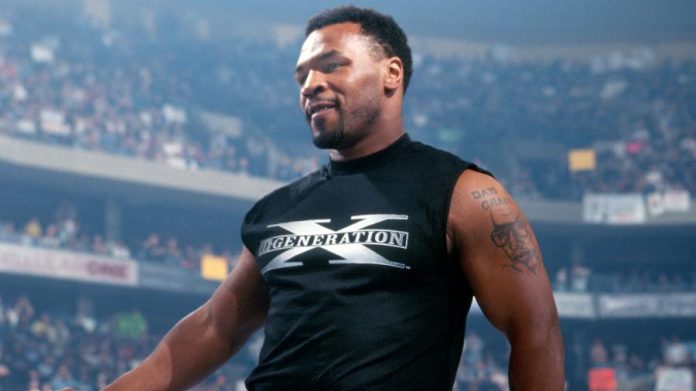
We’re two weeks into the Wrestlemania challenge series and just like the pandemic, this chronicle of the showcase of the immortals had it’s ups and downs. With over a month of the shutdown in place, I might have to book Brutus to get a hair cut and ask The Sandman to bring the booze. This year finds the WWF in the middle of the Attitude era with the wild antics of Monday Night Raw drawing record-setting ratings as it traded wins with Nitro during this period. The show opened with a 15-team Battle Royal and in truth it was designed to reintroduce the Legion of Doom with some fresh aspects to their gimmick, including Sunny as their manager and motorcycle helmets added to their traditional spiked shoulder pads. As I mentioned yesterday, the Road Warriors are arguably the greatest tag team of all time, but lost some stream during this period because they were a little older by this point and while their playbook was effective, their somewhat limited in-ring presentation had been seen for almost 15 years. Unfortunately, helmets and Sunny in a skimpy outfit wasn’t enough to recapture the intensity that made LOD such a memorable act. Still, for at least that night, the new look got an incredible reaction from the crowd.
Taka Michinoku vs. Aguila, who would go on to be known as Essa Rios in the years that followed, lacked the usual psychology of WWF matches of the time, but it was a great bout with some stellar high spots. Taka retained the Light Heavyweight championship after a Michinoku driver. Since this is one of the few times that the light heavyweight belt had any major exposure, I wanted to discuss a few things about the company’s attempt to provide some counter programming to WCW’s cruiser weight division. Granted, the majority of the cruiser weights weren’t given the proper credit in terms of their star power or more specifically, their potential to became bigger stars, but at least WCW knew what they had as far as the division that could provide wrestling substance to go along with the sizzle of the NWO angle etc. For example, Bill Goldberg was a big draw in 1998, but if you put him in the ring for any extended period of time, his limited skill set would’ve exposed him as a rather one dimensional performer, which is why his original run was relatively short. When you’re trying to sell a nearly three-hour pay-per-view or maintain a viewing audience, the in-ring work of the cruiser weight division helped set a base for the rest of the program. There’s no doubt that Eric Bischoff missed the boat on making stars from the division that could’ve prevented the company from completely collapsing a few years later, but there was at least a spotlight put on the cruiser weight performers with the addition of Mike Tenay on commentary to explain their background. Plus, the cruiser weight stars were given the title to showcase their skills. On the flip side, the WWF brought in light heavyweights, but didn’t do anything else to showcase them or truly emphasis the style. The result was some stellar matches that got almost zero reaction, simply because the fans weren’t familiar with most of the stars that were booked for the light heavyweight matches.
Triple H defended the European title against Owen Hart in a match that saw Chyna handcuffed to Sgt. Slaughter to prevent her from interfering in the contest. The finish saw Chyna throw powder in Slaughter’s eye and hit Owen with a low blow to set up the pedigree from Triple H. This was a solid match that was more proof that management could’ve done more with Owen, especially in the aftermath of the Montreal incident. While there was a brief angle of Owen attacking Shawn Michaels, he was more or less kept on the mid-card with this feud with Triple H instead at the time. A storyline where Owen went after Shawn’s title as revenge for Bret could’ve drawn money.
There was a mixed tag match that saw Sable and Marc Mero defeat Goldust and Luna. In retrospect with how it’s now known how rude Sable was to most of the others on the roster, watching this bout will make you shake your head because the entire match was built around a spotlight on Sable. The entire angle was based on how Sable was a bigger star than Mero, which shows you how invested the office was in Mero’s future in the company. Sable hit Goldust with a legitimate punch to the face and then nailed Luna with stiff kicks in the corner as a result of what looked to be total carelessness. In the brief spots where Sable had to sell, it was done rather poorly, and this one dimensional performance along with her lack of any type of promo skill prove that modeling a t-shirt was her only qualification to be in the wrestling business. On a better note, Mero and Goldust had some good spots here, and it probably would’ve been a better match if it was a one-on-one contest. Luna had to work with Sable here so obviously, she deserved a better opponent, and probably doesn’t get the credit she deserves for her career.
The Rock vs. Ken Shamrock was the IC belt was a really good match, and while the poise that The Rock brought to the ring was always apparent, there are glimpses here that Shamrock could’ve been a main event level talent. Perhaps, it’s easy to say that when he was working with the Rock, but the intensity that Shamrock brought to the ring was believable and he portrayed his character well. If I had to guess, I’d say that the main reason that he didn’t have a run with the title was because he didn’t have any major promo skills at all. It’s disappointing that Shamrock is known more today for being so far past his prime in MMA that it’s embarrassing than most of his wrestling career because there was a roughly two year period where he was a major star.
The Cactus Jack and Chainsaw Charlie vs. The New Age Outlaws in a dumpster match was a fun brawl. It’s comical that management wanted to cast Funk as Chainsaw Charlie so they could copyright the name when he was known as a legend for decades before this. Even more comical was that Chainsaw Charlie wore a Terry Funk t-shirt during this match, which more or less made the name change pointless anyway. The Attitude era is looked upon so fondly by fans that sometimes people forget some of the absolutely awful gimmicks or angles, but this bout was the Attitude era done right.
Speaking of being done right, as far as episodic and cinematic wrestling, the Undertaker/Kane feud did it very well. Sure, it stretched the limits of logic, but there was an anticipation to see the narrative would unfold. The cinematic elements weren’t a substitute for the substance of the storyline. As far as the actual match, it had an atmosphere that projected a major event and it delivered in the ring. Obviously, both of these two would have major roles at WM events in the years that followed.
The main event was the start of Stone Cold’s run at the top star in the promotion and in the process he eventually became the biggest star in the history of the industry. Stone Cold is critical of the match, but I think it was decent and provided the moment to propel Austin to the next level with Mike Tyson raising his hand to declare him the winner of the match. Shawn Michaels finished up for a while here and made sporadic cameos throughout the rest of the Attitude era before he returned full-time in 2002. As great as he was during his first decade in the company, the argument could actually be made that he had an even better run after he cleaned his life up and made a return to the company.
What do you think? Comment below with your thoughts, opinions, feedback and anything else that was raised.
Until next week
-Jim LaMotta
E mail [email protected] | You can follow me on Twitter @jimlamotta

